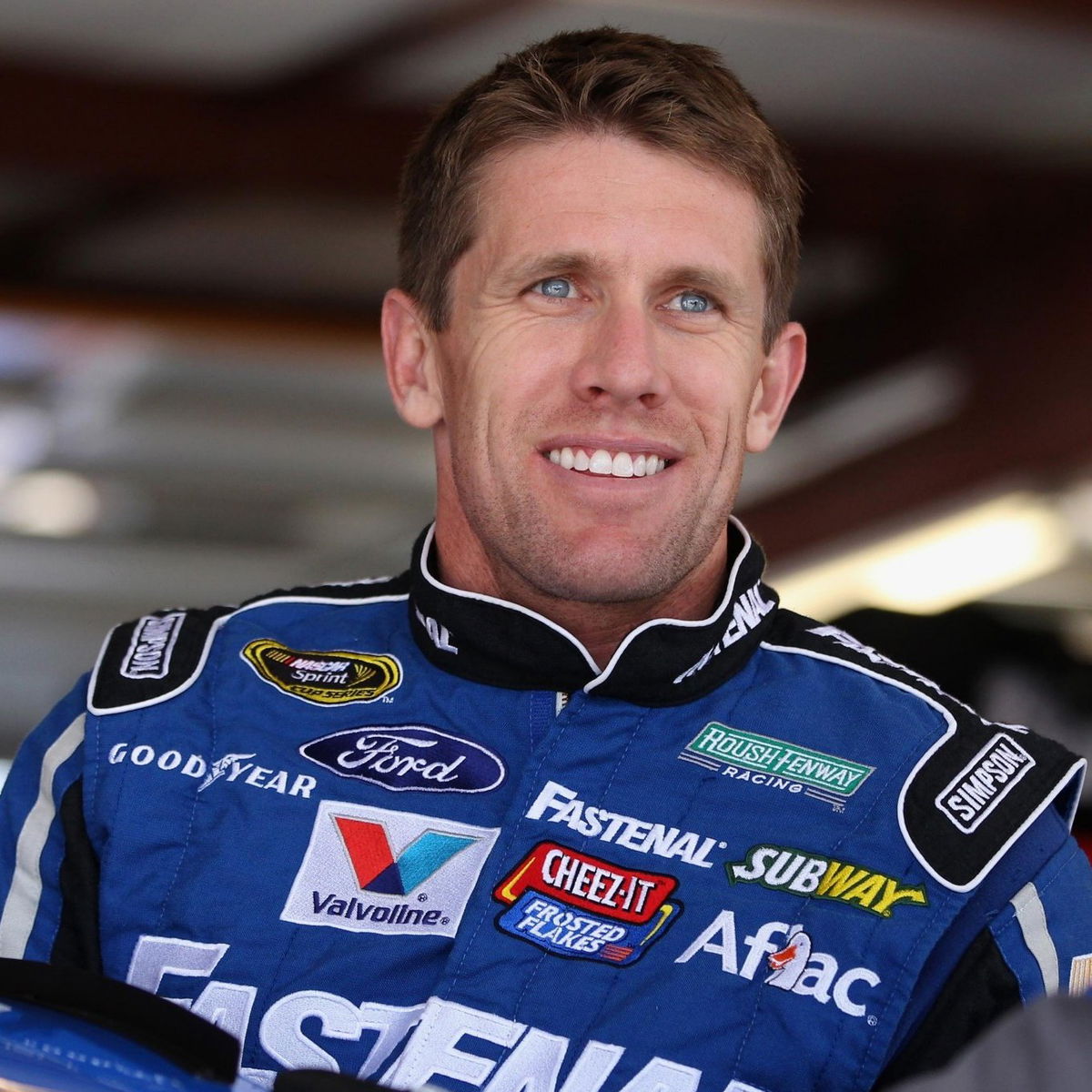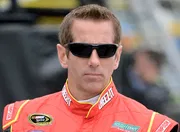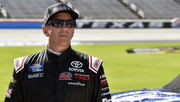

NASCAR is a sport of fine margins and teams do everything they can to gain a competitive edge. Carl Edwards was a part of such an experiment during his days racing for Roush Fenway Racing, and the results left him amazed at the discovery.
Watch What’s Trending Now!
This particular discovery was made when engineer Chris Andrews was a part of Carl Edwards’s crew team. Andrews is one of the most respected engineers in NASCAR, working with drivers like Robby Gordon, Bill Elliott, Carl Edwards, Matt Kenseth, and Kasey Kahne. However, it was during his time with Carl Edwards that he struck gold until NASCAR intervened. What did Andrews find out that was so race-changing?
ADVERTISEMENT
Chris Andrews’ idea was so good that NASCAR had to rule against it
Andrews was a part of Roush Fenway Racing for 5 years, 4 years as an engineering manager, and a year as crew chief between the years 2006 -2011. He detailed his experience working there on the ‘It’s Not the Car’ podcast, saying, “We carried this rear-end housing with us in the test trailer all year. Every R&D test, he’d stand right next to me like, hey, we need to try that rear-end housing. I was like, yeah, yeah, we’ll get to it. We’ll do this damper thing, we’ll run these headers for Doug Gates, and the transmission guys want to do this… and we’re out of time. We’ll do it at the next test.”
Rear-end housing is a component of a vehicle’s drivetrain system that supports and encloses the rear axle, axle shafts, and differential. A better rear-end housing can improve weight distribution and stability among other things. This is especially important as better rear-end housing could significantly alter the speed of a stock car.
Andrews talked about how one of his crew members had an idea for a rear-end housing that no one else in the league used. Therefore, his team was hesitant to implement or even try it out. All these R&D tests are incredibly crucial for NASCAR drivers as it gives them a feel of the car and what can be changed or improved for them in order to be in a position to win. After months of waiting, Andrews finally caved in and this was his story of how things unfolded.
ADVERTISEMENT
“We were at Nashville. This big speedway at Nashville testing with Carl Edwards. We had gotten through out damper list, engine test, geometry test list, arrow stuff and it was like 3 o’clock. He was like, ‘You know we got that rear-end housing/ I was like, Let’s get over with it because I’m tired of hearing about it. Then we’ll call the pilots, get in the plane, and go home.
We put the rear housing in, Carl gets in, does the outlap, peels around the bottom of one he’s coming off turn two down he back straight and he keys the mic and he said, ‘This is what we need every week’. His lap is like a tenth and a half faster than we’ve gone all day. Carl had a few laps and came and was like ‘Can we do more of that?’ I was like, ‘Oh man, I’ve been sitting on this for four months, you know,” Andrews concluded.
ADVERTISEMENT

ADVERTISEMENT
This was an Eureka moment for Andrews and the crew which turned out to be a game-changer, but not for too long. Andrews detailed how NASCAR and everyone else eventually caught on, saying, “We go back to the shop, wrote the test report, everyone raved about it, and like two weeks later we had them in all of our cars on the race track. It just snowballed from there, other teams figured out what we were doing. Other teams started doing it, other teams started doing more. Then, eventually, there was a rule.”
Being one-tenth and a half faster is what can sometimes make the difference between winning and losing. Therefore, it is no surprise that teams started copying Roush Fenway Racing and using that blueprint to come up with their own new little things. Eventually, NASCAR decided to step in and ban the rear-end housing proposed by Andrews and the team. While they were not involved in any cheating per se, it definitely bent the rules to what is allowed. With Next-Gen cars, the authorities have definitely taken away that gray area.
Top Stories
Another Almost Fatal Disaster Surfaces From Statesville Airport Amidst Ongoing Greg Biffle’s Crash Investigation

NTSB Appeals for Greg Biffle’s Wife’s Alleged In-Flight Text Messages as Crash Investigation Heats Up

Donald Trump Issues Moving Message of Condolence for NASCAR’s Greg Biffle & Family During North Carolina Address

Air Safety Investigator Probes Possible Co-Pilot Role Amid Greg Biffle’s Fatal Plane Crash Investigation

Horrific Aerial Footage of Greg Biffle’s Fatal Crash Emerges Leaving NASCAR Community in Tears

ADVERTISEMENT
Next-Gen cars have given NASCAR a bad look
In 2022, NASCAR introduced the Next-Gen cars, and nobody has stopped talking about them since. The technology used to build them is a sight to behold but the end product has seen its fair share of criticism. Next-Gen cars did stop teams from experimenting with rear-end housing after implementing a transaxle at the rear end, but safety continues to be the pertinent issue. With on-track injuries increasing and issues with the tires, fans seem to prefer the Gen 6 cars.
During the Gen 6 car era from 2013 – 2021, just four drivers were injured on the track. Denny Hamlin broke his vertebrae at Fontana in 2013, Dale Earnhardt Jr saw his season cut short with a concussion at Kentucky in 2016, Aric Almirola fractured his vertebrae at Kansas in 2017, and Ryan Newman suffered head injuries on the last lap of the Daytona 500 in 2020.
For comparison, five drivers have already been injured on track in the two years since Next-Gen cars were introduced. One key theme linking three of the five injuries together is concussions. Noah Gragson’s concussion came at Gateway in 2023, hitting the wall with the driver’s side after blowing a tire going into turn one. While Alex Bowman suffered after backing into the wall in turn four at Texas. Kurt Busch’s crash came in qualifying at Pocono after spinning and backing into the wall, and this crash ended up ending Kurt Busch’s career.
ADVERTISEMENT
Head injuries are one of the most delicate situations in all of sports, and with the frequency increasing at an alarming rate, NASCAR will have to make a change. The tires were made wider with these Next-Gen cars, and for the moment, it feels like this has just made the car more prone to crashes. Do you think NASCAR will implement changes to the Next-Gen cars in the near future?
ADVERTISEMENT
ADVERTISEMENT
ADVERTISEMENT

